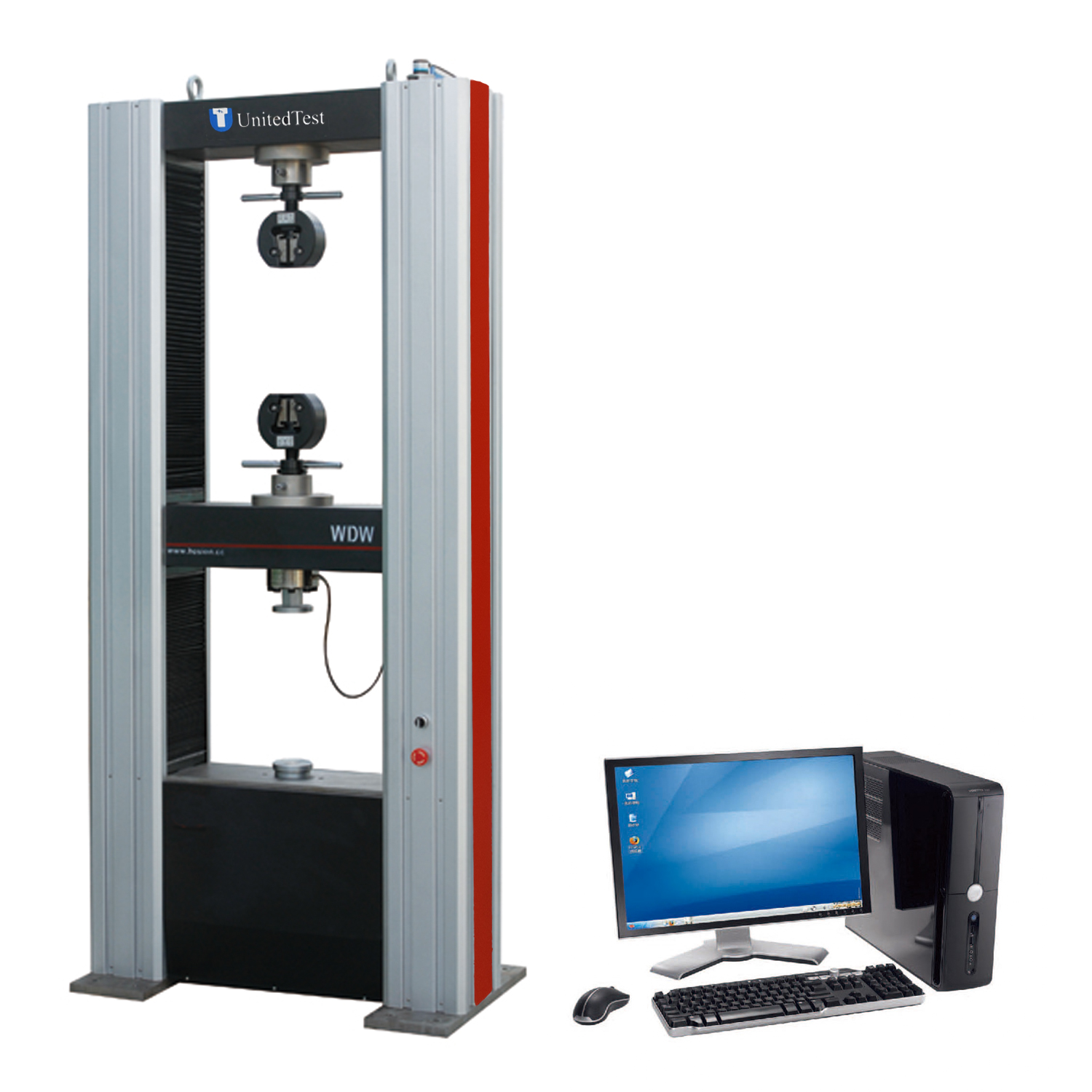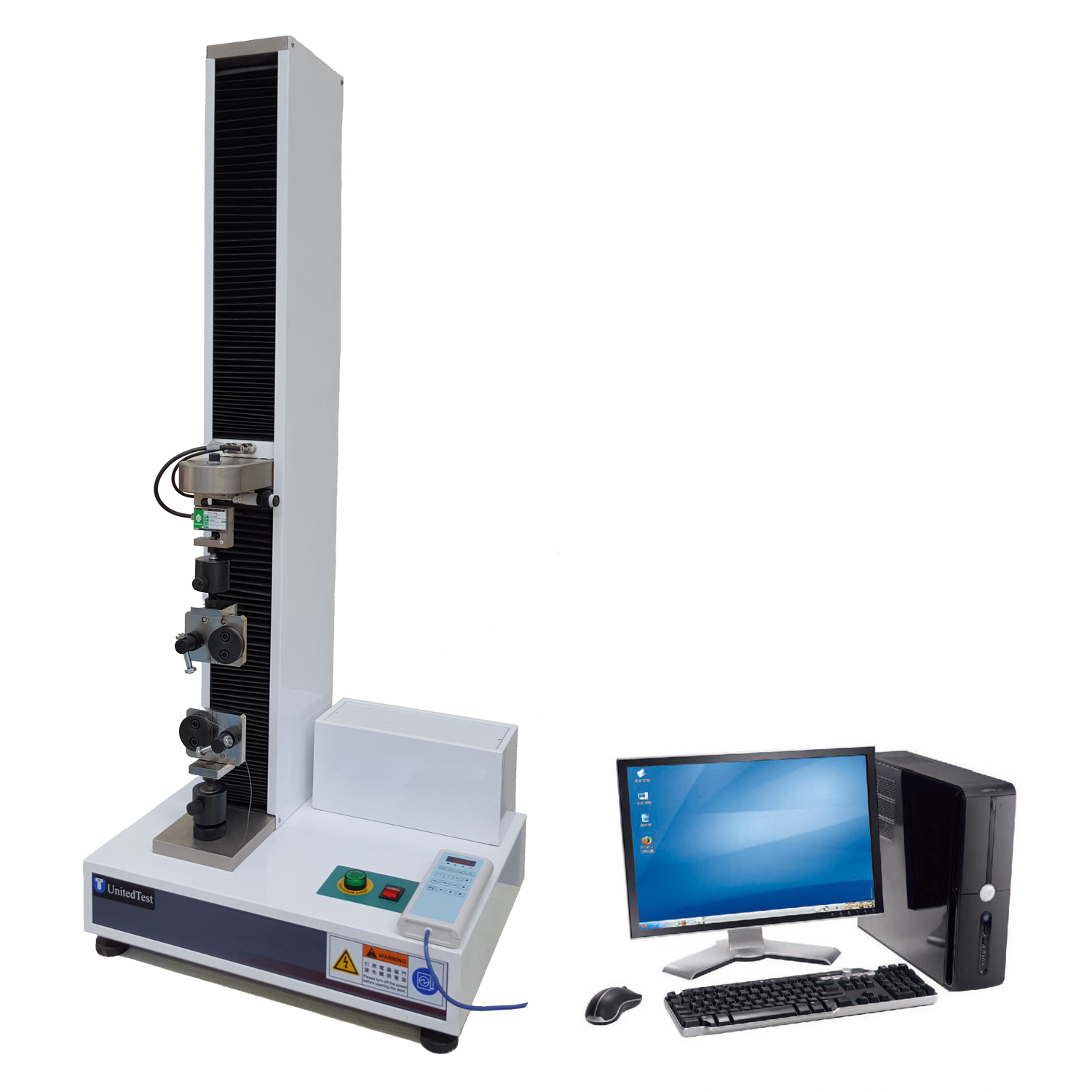Guide the test procedure of ASTM D3167 Roller Peel Resistance Test
1, What is the floating roller method?
The floating roller method is a technique for determining the peel strength between rigid metals and flexible metals through a floating roller axis. Compared to other peel testing methods, the floating roller method can provide more stable and reliable data. This is because during the testing process, the surface of the flexible metal does not need to perfectly match the surface of the roller axis, thus reducing human operational errors and equipment requirements.
2, Testing Principle
Under specified testing conditions, the testing principle measures the average force required per unit width, expressed in kN/m, to gradually separate two bonded metal adhesive specimen along the bonding line.
3, Testing related standards:
ASTM D3167, ISO 4578, BS EN 1464
4, Testing Machine:
UnitedTest Single column tensile testing machine, or Dual columns universal testing machine.
ASTM D3167 Floating Roller Peel Resistance Test fixtures.

Note: The fixture supporting the sample is shown in Figure. The upper end of the fixture is connected to the grip of the testing machine. The diameter of the roller shaft on the peeling test fixture is 25 mm. Bearings should be used at both ends of the roller shaft, allowing it to rotate freely.
5, Test Procedure
Step 1: Sample Preparation Prepare the sample according to the dimensions shown in the figure. The sample can be prepared individually or cut from a test plate.

The test board and individual samples are bonded together using two pieces of properly surface-treated adherends. When using adhesives, the recommended methods should be followed to achieve the best bonding results and minimize deviations. The thickness of the flexible adherend is 0.5 mm ± 0.02 mm, and the thickness of the rigid adherend is 2.0 mm ± 0.1 mm. When cutting samples, minimize the impact of cutting heat and mechanical force on the test results. The preferred sample width is 25 mm or another width suitable for the testing device, which should be noted in the test report.
Setp 2, Sample numbers
commonly not less 5 pcs.
Step 3, Test Procedures
Insert the specimen into the peeling fixture. Clamp the unbonded end of the flexible adherend into the lower jaws of the testing machine.The separation rate of the jaws is 100 mm/min ± 5 mm/min, unless otherwise specified.During the test, if the rigid adherend bends or deforms, the specimen must be redesigned to ensure it has sufficient stiffness for the peeling test.Automatically record the relationship curve between force and the distance moved by the testing machine's jaws (the relationship curve between force and peeling length).Excluding the initial peeled length of 25 mm, at least 115 mm must be peeled.If failure occurs outside the peeling area, the result will not be counted.
Step 4, Processing Test Results
From the automatically recorded curve, calculate the average peeling force per unit width of the specimen within the effective peeling length of at least 115 mm (after excluding the initial peeled length of 25 mm and the last 20 mm).The result is expressed in kN/m.
Beijing United Test Co.,Ltd. export@unitedtest.com offer the testing equipment ASTM D3167 Peel Resistance Adhesives Test - Floating Roller . Contact us now : export@unitedtest.com, unitedtest@hotmail.com












